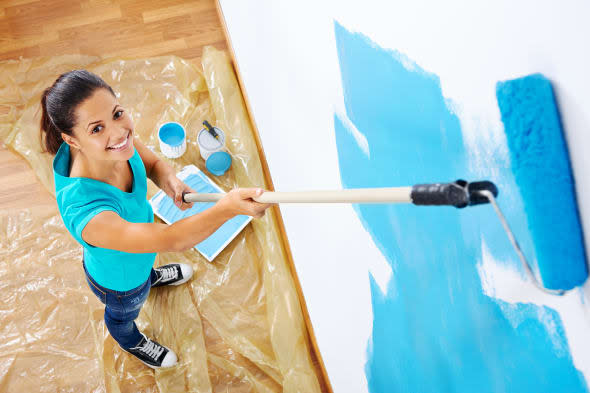Psychology of colour - the right hue for you

Stuck for decorating ideas? The colours you choose to surround yourself with can make a huge difference to your mood and wellbeing. Here's how to choose the right hue for you.
Related Searches
How colour makes you feel
Studies have shown that colour (particularly room colours that you're exposed to daily) can have a dramatic impact on your mood. The power of colour is something restaurants know only too well. Many fast-food restaurants are decorated with bright colours, particularly red, as it stimulates energy, promotes liveliness and encourages us to eat quickly and move on.
When it comes to decorating, our feelings in relation to a colour are often deeply personal, which is why it's best to choose a colour depending on how it makes you feel rather than following design trends.
It's not just the colour itself, but its saturation and brightness which affects us. For example, a rich sapphire blue that is saturated but not bright can be energizing, whereas a cool lavender shade will be calming. That's why it's important to use tester pots in dark and lighter areas of the room and view the colour in daylight as well as artificial lighting.
Here are a few colours to consider and where best in the house to use them...
%VIRTUAL-AFCSponserAds%Red
Red is the colour of energy, excitement and danger. Although warm and stimulating it can increase excitability, tension and anger. Choose bright shades to encourage passion in the bedroom but avoid in children's rooms as it can cause over-excitability. Red encourages lively conversation and aids digestion, which makes it a good choice for the dining room.
Orange
Warm and welcoming, orange combines the sunshine happiness of yellow with the high energy of red. Choose bright shades to encourage fun and activity in a child's playroom and more muted shades to create a sociable atmosphere in the living room.
Green
Green is the colour of health, harmony and renewal. Mentally and physically relaxing, it encourages a sense of rest and recuperation. Soft shades of green soothe the nerves and can help alleviate feelings of depression, and work well in rooms where you want to relax and wind down.
Blue
Blue is the colour of sensitivity, wisdom and peace. Pale blues are calming and can help promote sleep. Blue is a good choice for the office as it aids communication and clear thinking. Dark blues should be used sparingly as they will drain energy from the room while pale blue shades can be too cool for a room, turning it chilly-looking in winter months.
Yellow
Sunshine yellow brings energy and happiness to a room. Pale yellows will create a welcoming space in the hallway, stimulate the appetite in the dining room and aid perception and understanding in a home office. Use strong yellows sparingly as they can be over-stimulating and have been shown to produce feelings of frustration and anger.
Purple
Purple is traditionally associated with royalty, nobility and power. Strong purples and reds suggest luxury but use dark shades sparingly, perhaps on a single feature wall, as they can create a sense of depression and frustration. As purple tends to stimulate the creative part of the brain, it's best avoided in bedrooms in favour of more restful colours.
Are you re-decorating your home? What colours work for you? Leave a comment below...




